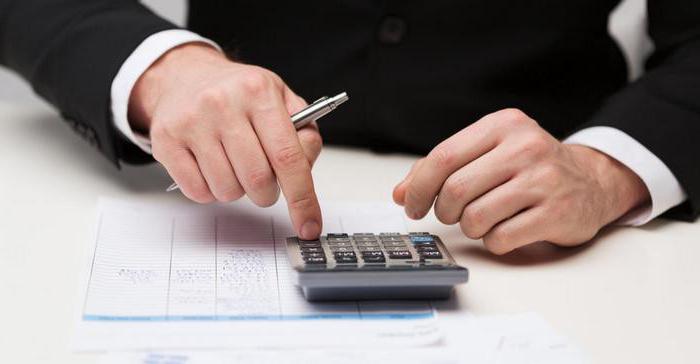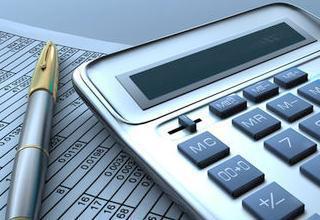Account 19 is used to summarize information on the amounts due and paid for VAT on works, values and services purchased. Consider this article in more detail. 
VAT
This tax is considered indirect. VAT is a form of withdrawal to the state budget of a part of the price of a product, service or work. It is created at all stages of the production process and deducted as it is implemented. When applying VAT, the final buyer pays the seller a tax on the whole price of the acquired goods.
But he begins to enter the budget earlier. This is due to the fact that the amount from its part of the price added to the cost of purchased raw materials, services / work that are required for production, is paid to the state by each participant in the production at different stages. The VAT rate in the Russian Federation is 18%. It is used by default if the operation is not classified as taxable at 10% or 0%. VAT was introduced in the Russian Federation on January 1, 1992. The rules for calculating and paying it were determined first by the corresponding Federal Law "On Value Added Tax". Since 2001, the procedure has been regulated by Ch. 21 Tax Code. For certain categories of payers and VAT transactions is not established. For example, enterprises may not pay tax if the amount of their revenue for the previous three months following each other does not exceed a certain limit (2 million rubles under paragraph 1 of article 145 of the Tax Code).
Subaccounts 19 accounts
This article may open:
- Subaccount 19.1. It reflects VAT on the acquisition of fixed assets. It takes into account due or paid amounts of tax related to the purchase and construction of fixed assets, including individual land management sites, etc.
- Subaccount 19.2. This item covers VAT on purchased intangible assets.
- Subaccount 19.3. It shows VAT on purchased refineries. Under this article, the tax amounts assigned for payment or paid by the enterprise relating to the acquisition of materials, raw materials, semi-finished products and other types of inventories, goods, are passed.

Characteristic
Reflection on the debit of the amount of VAT that is due to be paid or paid by the company for the purchased MPZ OS and NMA is carried out in correspondence with the settlement items. Closing of the 19th account - write-off of the accumulated amounts - is carried out with the inclusion of an account in the account. 68, showing the calculations of fees and taxes.
Specificity
Account 19 in accounting is considered very peculiar. It can be considered as a regulatory additional article, through which the price of materials (debit balance account. 10) can be brought to cost. In this case, 19 is passive. It is also interpreted as a certain receivable. In this case, the score is 19 active. This is due to the fact that when transferring materials to production, the cost of the tax paid to the supplier is reimbursed from the budget.
Registration
When implementing works, goods, services, in addition to their very value, the buyer must pay VAT to the seller at the established rate. In its amount, the latter shall issue an invoice to the acquirer within five days. The calculation of the period starts from the date of shipment of the product or the provision of the service / performance of work. In the accounting documentation and invoices of the supplier, the VAT should be highlighted in a separate line. If operations on the sale of any services, products, works are not taxable or the seller is exempted from the obligation to pay tax, paperwork is carried out without allocation.
At the same time, the corresponding record “without VAT” must be present in the settlement documents.In the process of implementing work, products or services to the population in cash, requirements for the preparation of documents and issuing invoices will be considered fulfilled if the seller handed the cashier's check to the purchaser. He may submit other supporting paper of the established form. 
Invoice
This is a document serving as the basis for the adoption of tax amounts for refund or deduction. The mandatory details of the invoice are set in paragraph 5 of Art. 169 Tax Code. The document must be signed by the chief accountant and director of the enterprise or other persons authorized by them. Invoice - stamped. The seller must have a journal for the accounting of these documents and a sales book. The acquirer, respectively, should also be recorded received invoices in the appropriate directory. A shopping book is also required. The order in which these journals are maintained is approved by a government decree.
Account 19: Postings
After accepting the purchased goods, the buyer pays VAT to account 19. In the accounting under this article, the amount of tax paid on travel expenses is also passed. The calculation is carried out at a rate of 16.67% of the indicated expenses (without sales tax). In accordance with the information from the invoices issued by the sellers, as well as with documents confirming the payment of tax, the buyer is entitled to reduce the mandatory deduction to the budget for the amount entered into account 19. Such an opportunity is possessed by those acquirers who use the obtained values for production purposes. In this case, you must make a record: "DB 68 Cd 19".

Inclusion of VAT in buyer's expenses
The amount of tax that is presented to the acquirer, is attributed to its costs when using products, works, services:
- In the manufacture / sale of facilities whose operations for the sale of which are not subject to taxation (exempt) under paragraphs 1-3 of Art. 149 Tax Code.
- Production / transfer of products, services, works, operations for which for their own needs are considered an object of taxation according to Sec. 21 but not subject tax accounting according to paragraphs 2, 3 of Art. 149 Tax Code.
- Implementations outside the territory of the Russian Federation.
For the amount of VAT that is presented to the buyer, the following entry is made: "DB 20 (44, 23, 26, 25, etc.) Cd 19".
General rules
Account 19 should be kept in compliance with a number of requirements:
- The debit reflects the amounts that are payable to contractors and suppliers for acquired material assets, as well as accepted services / work.
- The balance of the article should not contain VAT deducted to counterparties.
- Paid amounts are presented to the budget in accordance with the rules established in the Tax Code.
- VAT deducted to contractors / suppliers, but not presented to the budget according to the norms of the Tax Code, should be reflected in the accounts of values, costs or other expenses.

Important point
According to some experts, in DB, account 19 should include the accrued VAT in the budget for the adopted fixed assets, completed capital construction, and implemented in an economic way. But other authors acknowledge this proposal as unfounded. Account 19 reflects the amount of VAT that must be paid to contractors and suppliers, that is, legal entities (organizations). When an enterprise has budget tax liabilities, it is necessary to take into account the circumstances in which they arose. In the process of construction in an economic way, an object of taxation is created. If it was not possible to present this tax to the budget, the accrued VAT should increase the initial cost of the fixed asset. But under tax law, enterprises show tax. It follows that these amounts of VAT represent a certain amount of budget obligations to the payer. The latter, subject to requirements, will present them to the budget subsequently. Thus, these amounts should be reflected in the accounts of settlements, in particular in the account. 76. 
Analytics
It should be built in such a way that it is possible to prepare a tax return with minimal time costs. It is also necessary to organize separate VAT accounting for works, services, material assets that are used in the production of products intended for sale for export.
Example
Consider a situation where an enterprise during March 2014 bought certain products from a supplier and subsequently resold them to its own customers. The consignment of goods was purchased and sold in full. Acquisition costs - 12 thousand rubles. Of this amount, 1830.51 is VAT. The amount of tax was allocated from the cost of production and assigned to account 19. This transaction reflects two entries:
- DB 41 Cd 60 - the cost of purchased products was taken into account 10 169.49 rubles
- DB 19 Cd 60 - shows the input VAT for the purchase of goods 1830.51 p.
At the end of the reporting year, the company writes off the amount of VAT to the account. 68. Thus, the organization exercises its right to reduce debt to the budget. The following entry is made: "Db 68 Cd 19 - the amount was transferred to the debit of the account for settlements with the budget to reduce the amount of tax charged 1830.51 rubles."
In the same March, the company sells its products to its customers at a cost 1.5 times the purchase price (18 thousand rubles). This operation is reflected in the entries:
- DB 90.2 Cd 41 - shows the cost of goods sold 10 169,49 p.
- DB 62 Cd 90.1 - accounting for the debt of the buyer to the company 18 thousand rubles (including VAT 2,745.76 rubles).
- DB 90.3 Cd 68 - the amount of VAT has been allocated for deductions to the budget of 2745.76 rubles.

Next, the financial result of the transaction is determined by establishing the difference between the turnover on the debit and credit of the account "Sales": 10169.49 p. + 2745.76 p. - 18 000 p. = - 5,084.75 p.
Minus here means profit. The amount received is transferred to the account. 99: DB 90.9 Cd 99 - income from March sales in 2014 5,084.75 p.
As a result, on the count. 68 the amount of VAT is formed, subject to transfer to the budget. It is defined as the difference between Cd and DB: 2 745.76 p. - 1 830.51 p. = 915.25 p. - tax for deductions to the budget arising from March sales in 2014.
Conclusion
Many experts at the initial stages of work believe that score 19 is quite complicated to understand and use. Nevertheless, to learn how to handle it correctly is extremely important. Experienced accountants are very fond of this account. This article actually saves enterprise finance. On the account, you can not only take into account, but also reimburse part of the VAT from the budget, thereby reducing the amount of tax payable.








